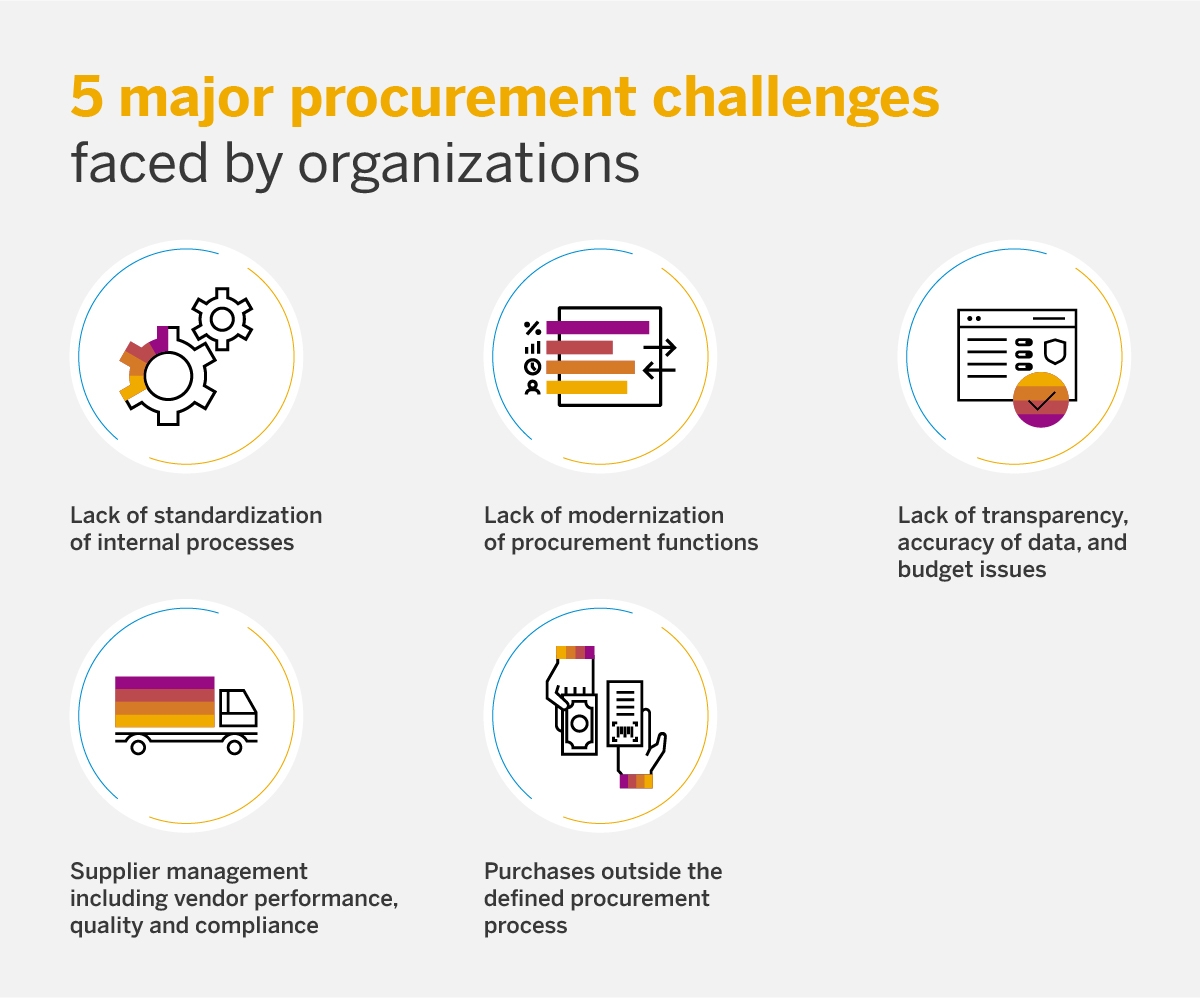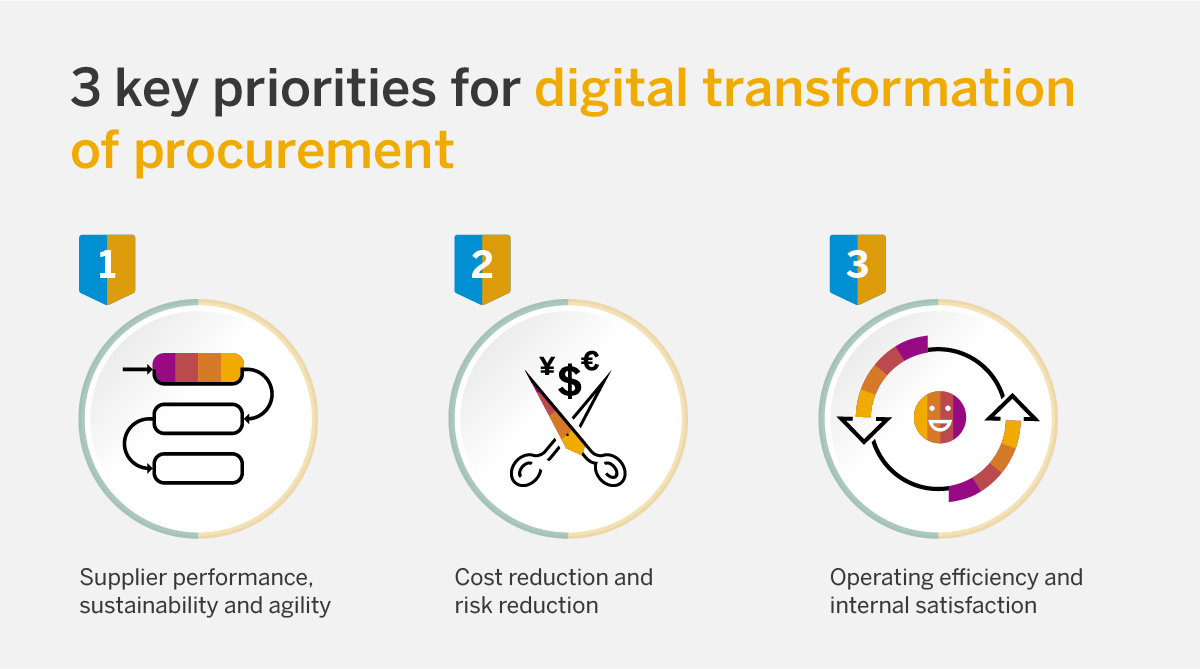SAP and the Indian Institute of Materials Management survey 75 respondents in charge of procurement across 15+ industries in India to analyze the challenges and discover the opportunities.
Across more than 50% organizations, old technology and confusing data have impeded procurement, according to a study conducted by SAP in collaboration with the Indian Institute of Materials Management (IIMM). This comes at a time when organizations are looking to procurement leaders to drive innovation, making procurement a key enabler of business growth.
The study is built on a survey conducted with 75 people in charge of procurement for their organizations, with 37 online and 38 telephonic interviews. It includes 30 enterprise level companies and 45 small and medium companies from across industries. The survey was designed to analyze the challenges in procurement and assess the pace of digital transformation as economies begin to show signs of recovery after the coronavirus outbreak.
The study is organized into five sections that look at the challenges, priorities, IT spend, technologies implemented, and benefits of digital transformation.
Overall and Procurement Challenges
With the supply chain disruption brought on by the coronavirus outbreak, product cycles have become longer and financial liabilities have increased. The study shows that organizations are dealing with supplier management, data accuracy, and other challenges.
More than 75% of the respondents stated that internal user adoption of procurement technologies, differential internal processes, and headcount reduction have hindered organizations from attaining optimal production levels.
When it comes to supplier management, there are issues related to duplication of codes, lack of GST compliance and safety performance reporting. Although finding the right supplier is not much of a challenge, 50% of Indian enterprise level companies are faced with reconciliation issues and supplier performance issues at regular intervals.

Respondents also mentioned challenges such as contingency issues regarding returns, slow pace of technology implementation, and government interference with counterproductive regulations. Additionally, some cited system management, data migration, customization, efficiency and team performances, and unplanned downtime. Keep reading to learn how you can turn challenges into opportunities with procurement transformation.

Priorities for Procurement
The major themes highlighted by the study are cost reduction, sustainability and agility. In order of priority, small and medium sized organizations have ranked cost reduction (38%), followed by sustainability (31%) and agility (31%). When it comes to enterprise level organizations, 40% have ranked cost reduction as their top priority followed by sustainability.
The study points out that according to Indian firms, in the coming year’s risk reduction will take precedence over cost reduction. In light of the pandemic, reducing risk has become increasingly crucial for business continuity and resilience.

IT Spend and Pace of Digital Transformation in Procurement
With companies going into crisis management mode, budget reductions were visible in IT spend. However, more than 80% of the organizations have allocated up to 10% of their IT spend for the procurement function. The study further shows that 47% of small and medium sized companies have allocated less than 5% of their total IT budget, as compared to 77% of enterprise level organizations who are spending up to 10% on upgrading their procurement functions.

While several companies have invested in digital transformation, the study reveals that only 5% of organizations have automated more than 60% of their procurement function. This points to much work to be done for organizations to completely switch to fully automated systems for procurement. The next section highlights how companies can leverage technology to reinvent procurement.
Technology Implemented in Procurement Management
The Government of India is digitalizing the procurement process through the e-procurement program, with central public sector enterprises having implemented digital solutions. Enterprises in India are investing in solutions that provide supplier information, offer supplier risk management, evaluate supplier performance, assist in supplier vetting, and highlight supplier development.
In terms of technologies, organizations have been using cloud, AI and machine learning to automate and fast track their procurement transformation. The study illustrates that 65% of organizations are heavily reliant on cloud-based applications to ensure seamless procurement. Further, close to 50% of the organizations are using AI and machine learning to increase the overall efficiency of procurement functions.
Another area of concern is unauthorized spend, overcharges and duplicate payments, and more than 60% of companies have installed specialized software to address these issues. Furthermore, according to the respondents, supply chain automation will reduce chances of error and improve the quality of products and services. Learn how to shape a digitized, environment-friendly procurement value chain in the final section of the study.
Benefits of Digital Transformation and Barriers in Implementation
There are multiple benefits that digital transformation can help unlock for organizations at any scale. The study reveals how operational efficiency and supplier collaboration have shown significant improvement, with more than 50% of small and medium sized organizations citing improvements in operational efficiency and automating routine tasks.
Organizations have also flourished in transparency and quality. Additionally, there have been moderate improvements in cost reduction and compliance. When it comes to suppliers’ performance management, almost 67% of enterprise level and 62% of small and medium sized organizations have witnessed moderate improvement.
To get a complete picture, the respondents were also surveyed on barriers being faced in implementation. Low adoption of new processes and technologies was cited as one of the main hurdles in achieving high efficiency through digital transformation. Others mentioned reasons such as lack of funding, red tape, financial instability, and lack of customer trust in online support.
With organizations looking to boost productivity in order to recover from the pandemic, procurement has become a key focus to drive radical improvement. The survey lets you take a peek into the future of procurement in India, and provides a roadmap to overcome the barriers to intelligent spend management so you can prepare for the next supply chain disruption and stay future-ready.
For more information on the challenges, opportunities in procurement, and to find out how to achieve digital transformation from source to pay, download the complete report here.



